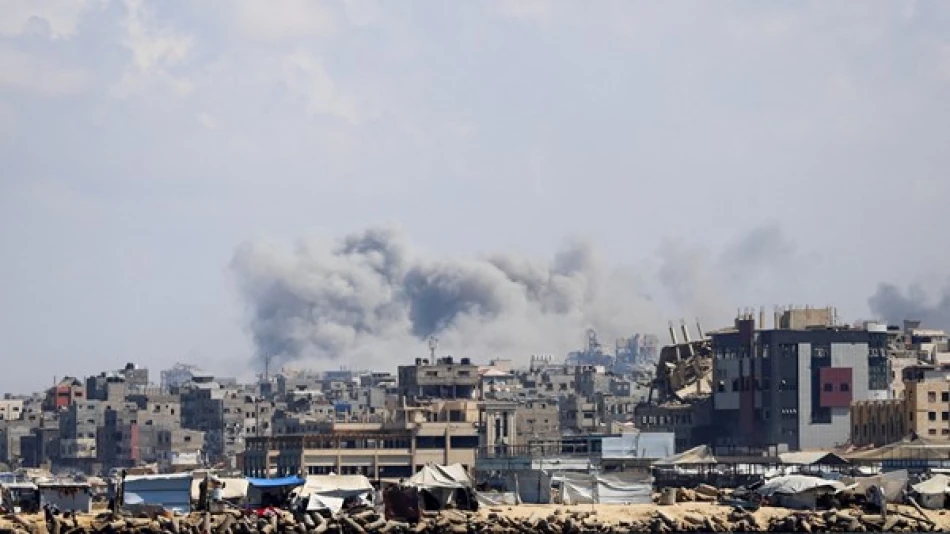
Israel Threatens Unprecedented Military Assault on Gaza City
Israel Threatens "Unprecedented Force" Against Gaza City as Humanitarian Crisis Deepens
The Israeli military has issued stark warnings to Gaza City residents, announcing preparations for an assault of "unprecedented force" while demanding immediate evacuation from the territory's largest urban center. With nearly half a million people already displaced and hospitals reporting mounting casualties from continuous bombardment, the escalation signals a potential turning point in the conflict that could reshape Gaza's demographic and urban landscape permanently.
Mass Displacement from Gaza's Population Center
Gaza City, the strip's most densely populated urban area, has become the focal point of Israel's intensified military campaign. The city, which housed over one million residents according to UN estimates from August, has seen approximately 480,000 people flee in recent days as Israeli ground operations expanded beyond the initial Tuesday incursion.
The demographic shift represents one of the largest internal displacement events in Gaza's recent history. Many of those now crowding into Gaza City had already been displaced from northern towns destroyed in earlier phases of the conflict, creating a cascading humanitarian crisis as people are forced to move multiple times.
Strategic Chokepoint: Rashid Street Corridor
Israeli military officials have designated Rashid Street as the sole evacuation route for remaining residents, creating a critical bottleneck for civilian movement. This tactical decision mirrors urban warfare strategies employed in other conflict zones, where controlling civilian movement becomes both a military necessity and a tool for managing population flows.
The restriction to a single evacuation corridor raises significant concerns about civilian safety and the potential for humanitarian disasters, particularly given the estimated hundreds of thousands of people who may still require evacuation from the northern Gaza city.
Historical Context and Regional Implications
The scale of displacement from Gaza City represents a significant escalation from previous military operations in the territory. Unlike earlier conflicts that typically lasted weeks, the current campaign's intensity and the explicit warnings of "unprecedented force" suggest Israeli military planners are pursuing objectives that extend beyond tactical gains.
Regional observers note parallels to urban warfare campaigns in Syria and Iraq, where civilian evacuation demands preceded intensive military operations designed to eliminate militant infrastructure embedded within dense urban environments. However, Gaza's unique geographic constraints—with limited exit routes and neighboring countries maintaining closed borders—create dynamics not seen in other regional conflicts.
Humanitarian Infrastructure Under Pressure
Medical facilities and emergency services report mounting casualties from continuous Israeli bombardment, though specific figures remain difficult to verify amid the ongoing conflict. The concentration of displaced populations in southern Gaza areas is straining already limited humanitarian infrastructure, including hospitals, water systems, and temporary shelter facilities.
International humanitarian organizations face unprecedented challenges in delivering aid, as the combination of active combat operations and mass population movements disrupts traditional relief distribution networks. The situation echoes humanitarian crises in other conflict zones, but Gaza's enclosed nature and high population density create unique complications for relief efforts.
Long-term Implications for Gaza's Urban Landscape
The current displacement patterns may permanently alter Gaza's demographic distribution and urban development. If significant portions of Gaza City's infrastructure are destroyed, reconstruction efforts could take years, potentially making temporary displacement permanent for many families.
This transformation would represent the most significant change to Gaza's urban geography since the territory's initial development as a refugee destination in 1948. The economic implications alone—with Gaza City serving as the strip's commercial and administrative center—could reshape the territory's already fragile economy for generations.
Most Viewed News

 Layla Al Mansoori
Layla Al Mansoori






